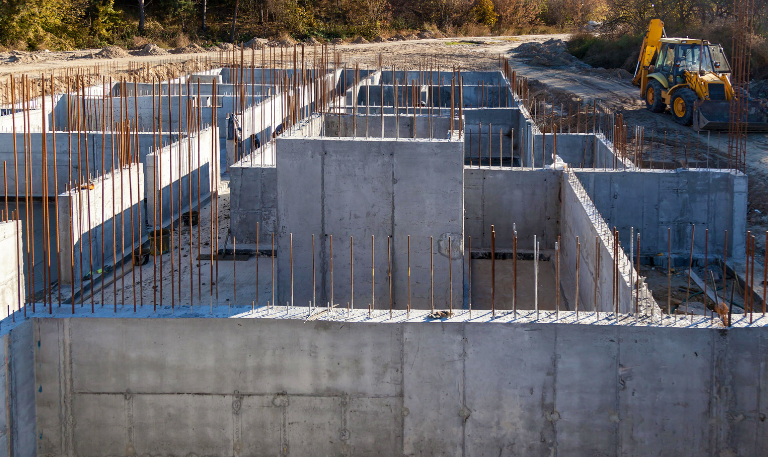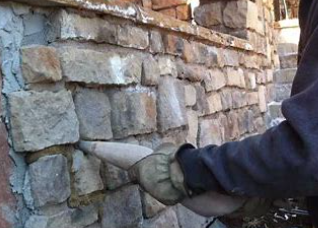Stormwater Regulations: Preventing Innovation
Working in stormwater, my presentations often begin by first asking do you want me to tell you what will happen, or what the rules say will happen? I don’t say this to be funny. But rather say this because a good chunk of the engineering professionals see their jobs as getting permits, not building the best value structures and designs. This thinking leads to a lot of conservative designs based on details and specs that were last updated 25+ years ago. To put 25 years in perspective: this is so long ago that the iMac (below) was the flagship product of a Steve Jobs-run Apple.

Simply put regulations push these kinds of people forward. However these same regulations often times hurt the innovators. Regulations are meant to clean up the back end of the industry, but they frequently and unintentionally hurt the front of the industry.
Permeable Pavement Regulations Hurting Innovation
I attend a lot of presentations and listen to a lot of stormwater engineers and regulators. And they pretty universally hate permeable pavement. My favorite quote is “our city will maintain all stormwater BMPs, except permeable pavement.” I don’t blame them. Most maintenance processes on permeable pavement are expensive and only provide temporary relief.
In response, most of the industry has responded by creating more onerous specs and regulations to more clearly delineate when a contractor did not follow the installation instructions. But to be fair more instructions aren’t going to impact the person who didn’t read the instructions in the first place, or the guy who saved pennies by hiring their friend’s nephew. In fact a lot of competent contractors have stopped installing these kinds of systems further moving away from what really is a great way to address the challenge of stormwater.
I guess I’m wired differently, because my reaction when I hear these folks speak is to make a beeline to them. Why? Because I sell PaveDrain, the next generation of permeable pavement. One guy (Doug Buch) thought that instead of starting with a pavement and putting holes in it to allow a water—a forced marriage so to speak between two things that haven’t like each other since before the Fall of Rome—to start with something that likes water and just make it a road. I just relay this story and slowly watch them realize that maybe there is better permeable pavement being hamstrung by bad regulations.
In building a better permeable pavement surface we’ve exposed so many other design and regulatory flaws, especially of the base, and I want to call your attention to them.
Soils
It is nearly gospel in the stormwater world that clay soil doesn’t infiltrate. I’m here to tell you not that this isn’t quite right. Rather the heterogeneity of the soil, particularly over a large area, is more important. That is if you find sand (well-draining soil), that is what dictates performance. Honestly in millions of square feet of installs, we’ve never not found a sand seam.
It’s like going to a grocery store and choosing the slow lane. You don’t ride or die on the slow cashier. You bail on your first choice and get on with your life. Water does the same thing. Receipts
Clogging and Maintenance
We view clogging as a kind of linear process. Each incremental bit, has an equal impact on the permeability of the surface. That is true when the surface is nearly all clogged. However, clogging proceeds quite slowly at first, and accelerates as a surface is nearly fully clogged. Problem is until PaveDrain pioneered the use of open joints, every systems joints were pre-clogged or pathways were tortuous paths. Now it’s obvious the faultiness of our original thinking, but we haven’t adjusted the regulations to reflect this.
Furthermore a maintenance process only gets you back to a fraction of the original. All of the maintenance in the world isn’t going to fix a bad design. To combat this, PaveDrain has a No Maintenance Warranty.
Geosynthetics and Layer Separation
Geosynthetics have come a long way since the 1990’s. What is available today is not like what was around when many of our stormwater rules were written in the early 2000’s. Unfortunately in that time period geosynthetic manufacturers have cut their external sales staff who educate engineers and regulators. High-strength and water permeable geosynthetics exist, although they are pricey.
The problem is that without education no contractor is going to select these premium products that are among the most expensive in the market. No contractor would ever ask to use this unless an engineer required it. And as every regulator will tell you, they aren’t looking for solutions to problems that aren’t yet there. It takes a manufacturer (without a dog in this race) to explicitly argue the value of geosynthetics.
To be clear confining layers, particularly when they consist of aggregate (small stones that can move independently of the bulk) is critical to avoiding settling and rutting of the surface. This is a purpose distinct from filtering. Particularly in permeable pavement where the surface’s joints function as a filter. To this we have dug up systems to prove out the fate of the sediment. Most of the sediment falls out in the joint or the top 1″ of stone. Very little makes it to the bottom, and gets trapped by the geosynthetic.
Rules vs Guidelines
Many engineers I’ve spoken with have taken guidelines or recommendations and turn them into rules. Often these paths overlap, and it is only upon re-reading what is written to see that there is a gap. To this end I ask a lot of questions, read very carefully, and often point out this nuanced distinction.
A great example is the Pot Roast Story. A woman always cuts the ends off of her pot roasts until her daughter asks her why. She says my mom always did it and I learned it from her. So she asks her mom, who says, “that’s what my mom did, and I learned it from her”. They ask her mother who says I did it because that was the only way it would fit in the pan. No reason to throw away perfectly good meat…
——-
Much of these statements come from experience. We offer them not to be difficult, but rather to educate. We offer wisdom, and hope that you take it. Just don’t blame us when you don’t.

VP of Business DevelopmentAaron Fisher
Latest News

4 Ways To Reinforce Concrete
Concrete is one of the most fundamental materials used in construction. If you’re working on a domestic project or a […]

The Environmental Benefits Of Using Ready-Mix Concrete
The construction industry is changing quickly to meet the growing demand for sustainability and eco-friendly practices. One of the most […]

6 Essential Tips For Grouting Stone Veneer
Grouting stone veneer is an important step in the installation process that can significantly impact the overall look and durability […]

Should You Fill Hollow Concrete Blocks?
Hollow concrete blocks are widely used in construction due to their strength, versatility, and lighter weight compared to solid blocks. […]
